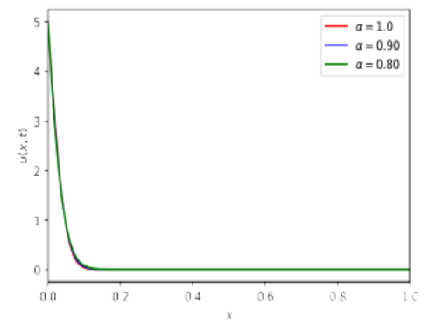


Indian Journal of Science and Technology
DOI: 10.17485/IJST/v16i48.2113
Year: 2023, Volume: 16, Issue: 48, Pages: 4657-4666
Original Article
Kalyanrao Takale1, Uttam Kharde2*, Geetanjali Takale3
1Department of Mathematics, RNC Arts, JDB Commerce and NSC Science College, Nashik Road, Nashik, 422101, Maharashtra, India
2Department of Mathematics, S.N. Arts, D.J.M. Commerce and B.N.S. Science College, Sangamner, 422605, Maharashtra, India
3CRSBOX, Senior Project Associates - Public Health CSR, Renalysis Consultants Pvt. Ltd, Ahmedabad, Gujrat, India
*Corresponding Author
Email: [email protected]
Received Date:23 September 2023, Accepted Date:22 November 2023, Published Date:28 December 2023
Objectives: The primary objective of this research paper is to gain a comprehensive understanding of drug diffusion within the human dermal region. Methods: A temporal fractional-order reaction-diffusion equation with Caputo sense is employed to get mathematical insights on the diffusion of drugs in the human dermal region. The explicit finite difference method is employed to numerically solve the modelled problem. A Python-based algorithm is employed to obtain a numerical solution through the finite difference method. Finding: In our research, we focused on examining how fractional-order parameters affect the distribution and concentration profiles of drugs in the dermal region. To convey our findings effectively, we conducted a comprehensive analysis, primarily using graphical representations. These visualizations offer a clear and insightful view of the drug's diffusion rate within the dermal region, taking into account the memory effect associated with the Caputo derivative. In addition to our exploration of fractional-order parameters and drug diffusion profiles, we conducted a comprehensive investigation into the stability and convergence of the explicit finite difference method. Novelty: The fractional order explicit finite difference method can be used to estimate drug concentration in the human skin. An algorithm based on Python provides powerful tool for obtaining numerical solution of fractional order differential equations.
Keywords: Drug Diffusion, Numerical Method, Dermal Region, Caputo Derivative, Python
© 2023 Takale et al. This is an open-access article distributed under the terms of the Creative Commons Attribution License, which permits unrestricted use, distribution, and reproduction in any medium, provided the original author and source are credited. Published By Indian Society for Education and Environment (iSee)
Subscribe now for latest articles and news.